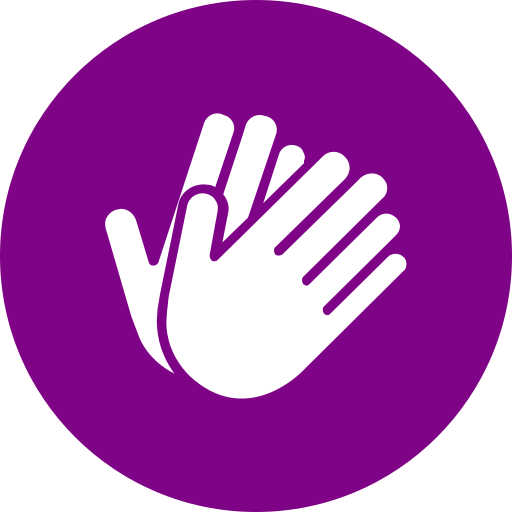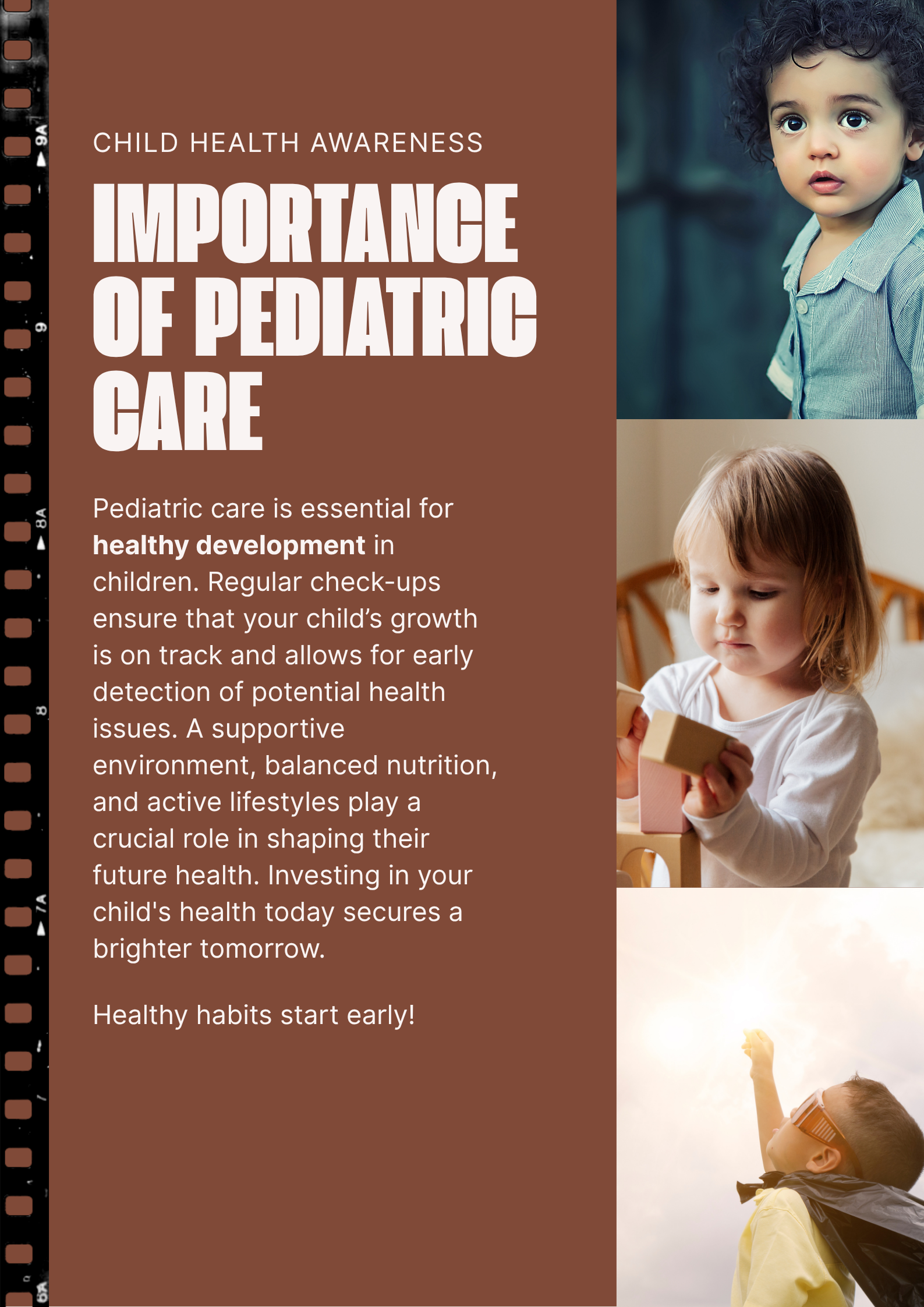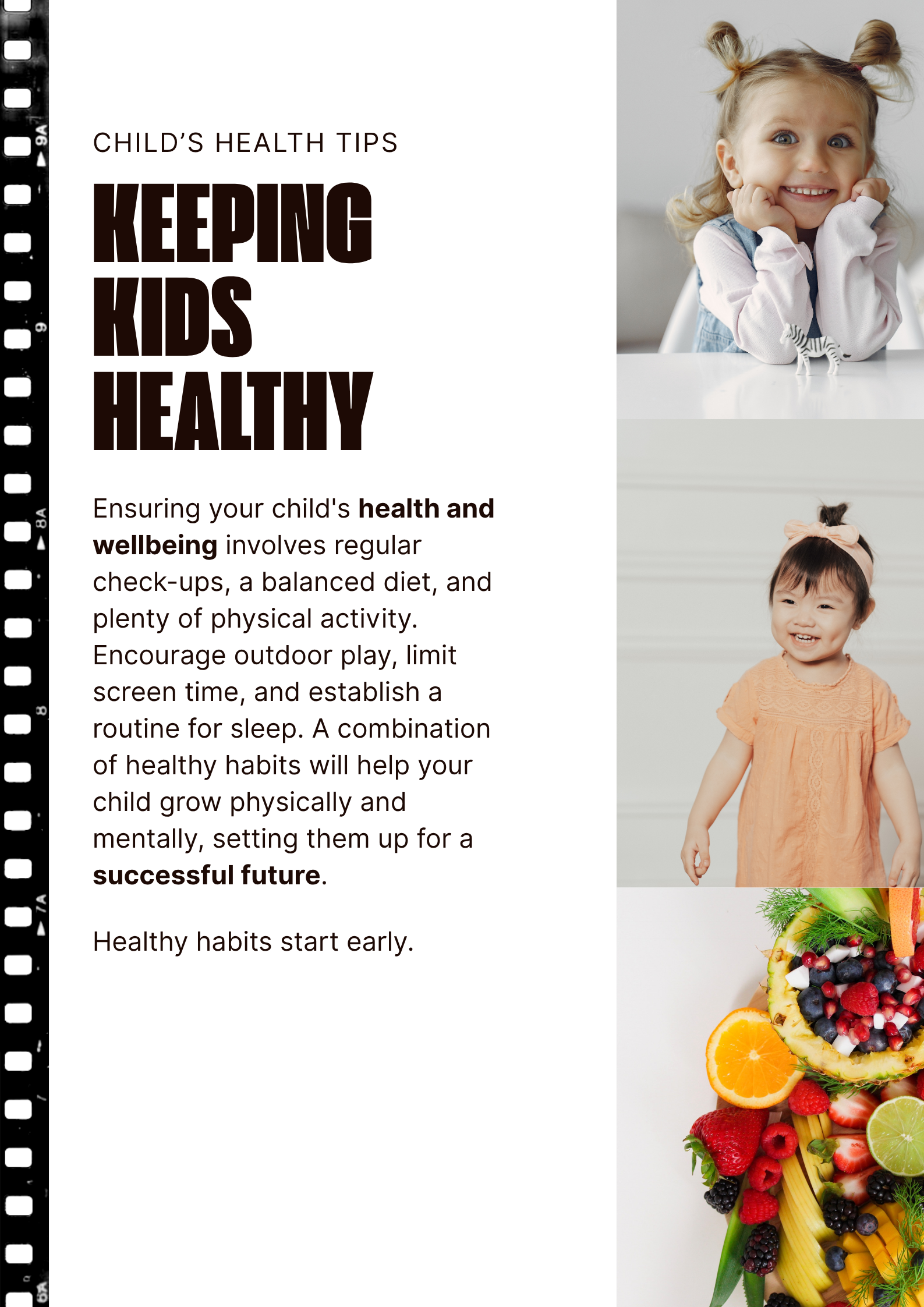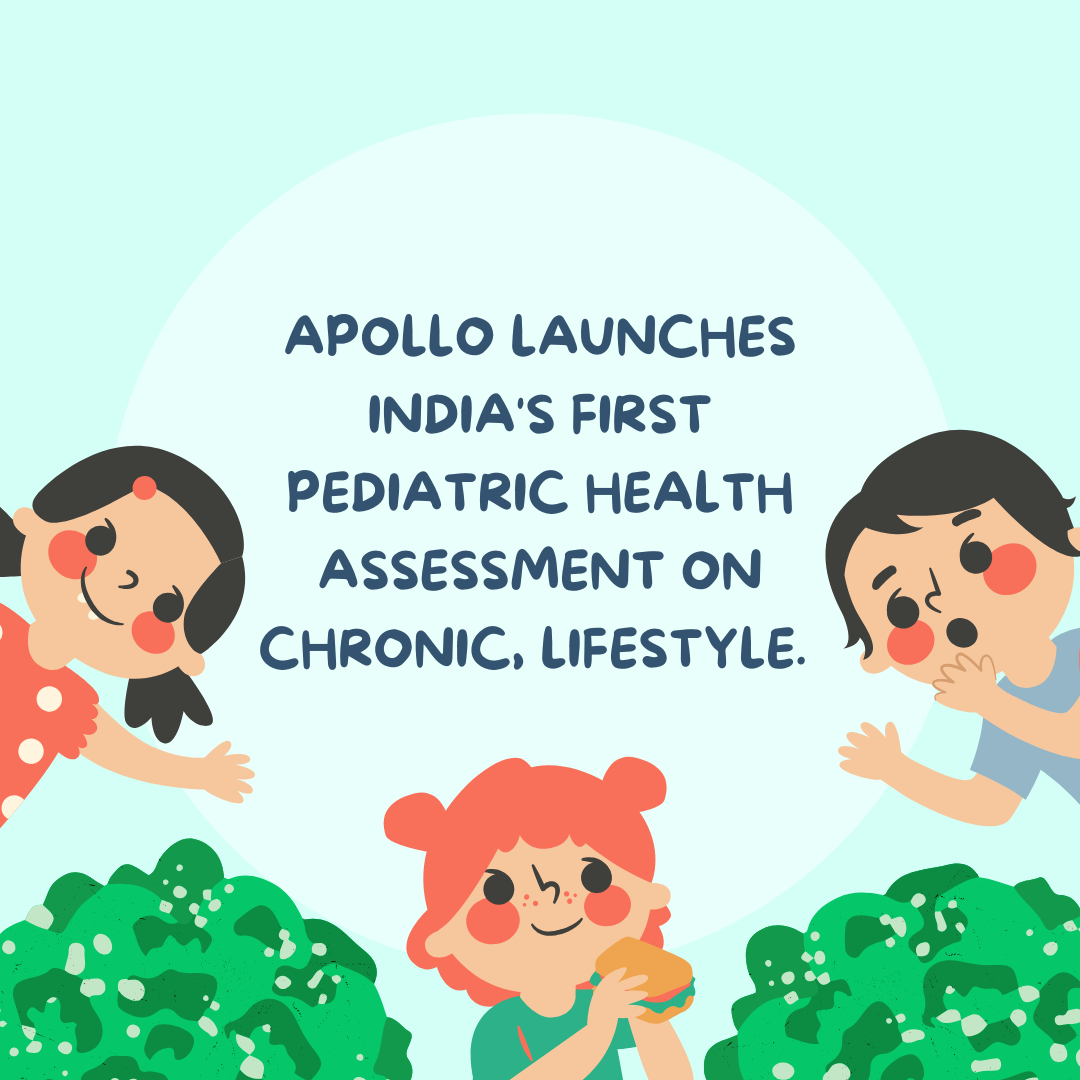Dr. Priya is a dedicated pediatrician committed to providing compassionate and comprehensive care for children of all ages. With a deep understanding of child health and development, she focuses on ensuring the well-being of her young patients while fostering trust with their families. Known for her gentle approach and expertise, Dr. Priya is passionate about guiding children toward a healthy and happy future.
-
21 Posts
-
6 Photos
-
0 Videos
-
Lives in Bangalore
-
24/03/1980
-
Followed by 39 people
Recent Updates
-
👩⚕️ From a Pediatrician's Desk: Every Child Deserves a Healthy Start 🌱
As a pediatrician, I don’t just treat fevers or sore throats — I witness milestones, reassure anxious parents, and become part of a child’s journey from infancy to adolescence.
Every smile after recovery, every hug from a little one, and every “thank you” from a parent reminds me why pediatric care matters.
In pediatrics, prevention is powerful:
Timely vaccinations
Early developmental screenings
Nutrition & mental well-being
Support for parents
Children need care that evolves as they grow — and that’s what we strive to offer every single day.👩⚕️ From a Pediatrician's Desk: Every Child Deserves a Healthy Start 🌱 As a pediatrician, I don’t just treat fevers or sore throats — I witness milestones, reassure anxious parents, and become part of a child’s journey from infancy to adolescence. Every smile after recovery, every hug from a little one, and every “thank you” from a parent reminds me why pediatric care matters. In pediatrics, prevention is powerful: ✅ Timely vaccinations ✅ Early developmental screenings ✅ Nutrition & mental well-being ✅ Support for parents Children need care that evolves as they grow — and that’s what we strive to offer every single day.0 Comments 0 Shares 6K Views 21
21 Please log in to like, share and comment!
Please log in to like, share and comment! -
-
🥗 1. Nutrition Habits
Eat a balanced diet: Include fruits, vegetables, whole grains, lean proteins, and dairy.
Limit junk food: Avoid excessive sugar, salty snacks, and processed foods.
Hydration: Drink plenty of water; limit sugary drinks like soda and packaged juices.
Healthy snacks: Choose nuts, fruits, yogurt, and boiled eggs over chips or candies.
🏃 2. Physical Activity Habits
Daily playtime: At least 1 hour of active play (outdoor games, running, cycling, etc.).
Limit screen time: Less than 2 hours a day for entertainment (TV, mobile, tablets).
Stretch and move: Encourage short breaks with stretches or small walks during study time.
🛏️ 3. Sleep Habits
Age-appropriate sleep:
Toddlers (1–2 yrs): 11–14 hours
Preschoolers (3–5 yrs): 10–13 hours
School-aged (6–12 yrs): 9–12 hours
Consistent sleep routine: Same bedtime and wake-up time daily, even on weekends.
🧼 4. Hygiene Habits
Handwashing: Before eating, after toilet, after playing outside.
Brushing teeth: Twice a day (morning and before bed).
Bathing regularly: At least once a day with clean clothes.
Nail and hair hygiene: Keep nails trimmed and hair clean.
5. Mental & Emotional Health
Encourage open conversations: Let them express feelings freely.
Praise effort, not just results: Builds confidence.
Limit stress: Avoid over-scheduling activities or academic pressure.
🩺 6. Preventive Healthcare
Regular pediatric check-ups: Track growth, milestones, and vaccinations.
Vaccinations: Stay up-to-date with the immunization schedule.
Vision and dental check-ups: Regular screening helps early detection.
🥗 1. Nutrition Habits Eat a balanced diet: Include fruits, vegetables, whole grains, lean proteins, and dairy. Limit junk food: Avoid excessive sugar, salty snacks, and processed foods. Hydration: Drink plenty of water; limit sugary drinks like soda and packaged juices. Healthy snacks: Choose nuts, fruits, yogurt, and boiled eggs over chips or candies. 🏃 2. Physical Activity Habits Daily playtime: At least 1 hour of active play (outdoor games, running, cycling, etc.). Limit screen time: Less than 2 hours a day for entertainment (TV, mobile, tablets). Stretch and move: Encourage short breaks with stretches or small walks during study time. 🛏️ 3. Sleep Habits Age-appropriate sleep: Toddlers (1–2 yrs): 11–14 hours Preschoolers (3–5 yrs): 10–13 hours School-aged (6–12 yrs): 9–12 hours Consistent sleep routine: Same bedtime and wake-up time daily, even on weekends. 🧼 4. Hygiene Habits Handwashing: Before eating, after toilet, after playing outside. Brushing teeth: Twice a day (morning and before bed). Bathing regularly: At least once a day with clean clothes. Nail and hair hygiene: Keep nails trimmed and hair clean. 🧠 5. Mental & Emotional Health Encourage open conversations: Let them express feelings freely. Praise effort, not just results: Builds confidence. Limit stress: Avoid over-scheduling activities or academic pressure. 🩺 6. Preventive Healthcare Regular pediatric check-ups: Track growth, milestones, and vaccinations. Vaccinations: Stay up-to-date with the immunization schedule. Vision and dental check-ups: Regular screening helps early detection.0 Comments 0 Shares 7K Views22
-
Pediatricians & Child Health Experts — We’d love your insight!
What’s the most common concern you see in pediatric OPDs?🧠 Pediatricians & Child Health Experts — We’d love your insight! What’s the most common concern you see in pediatric OPDs?72320 Comments 0 Shares 7K Views 19
19
-
-
💡 Real-World Truths Every Pediatrician Learns (Outside Med School)
You don’t just treat the child — you treat the parents too.
Reassuring anxious parents is half the consult.
Not every child cries because of pain.
Sometimes it’s fear, hunger, or just missing their teddy.
Your clinic will be full of colors — and chaos.
Toys, wall stickers, giggles, and sometimes, screams.
Vaccination days test your patience… and your reflexes.
One second calm, the next — needle dodged like a ninja.
You’ll become a part-time artist, magician, and singer.
Distraction techniques work better than any sedation.
Milestones matter — but every child grows at their own pace.
Parents will compare; you’ll teach them not to.
A single “thank you” drawing from a child will outshine 100 medals.
That crayon-scribbled heart? You’ll keep it forever.
It’s emotionally heavy.
The goodbyes hurt. Especially the ones that come too early.
You’ll celebrate the small wins like birthdays.
A child gaining weight? Walking again after therapy? Victory.
You’re not just building immunity — you’re building trust for life.
Many pediatricians end up treating generations.
💡 Real-World Truths Every Pediatrician Learns (Outside Med School) You don’t just treat the child — you treat the parents too. 👉 Reassuring anxious parents is half the consult. Not every child cries because of pain. 👉 Sometimes it’s fear, hunger, or just missing their teddy. Your clinic will be full of colors — and chaos. 👉 Toys, wall stickers, giggles, and sometimes, screams. Vaccination days test your patience… and your reflexes. 👉 One second calm, the next — needle dodged like a ninja. You’ll become a part-time artist, magician, and singer. 👉 Distraction techniques work better than any sedation. Milestones matter — but every child grows at their own pace. 👉 Parents will compare; you’ll teach them not to. A single “thank you” drawing from a child will outshine 100 medals. 👉 That crayon-scribbled heart? You’ll keep it forever. It’s emotionally heavy. 👉 The goodbyes hurt. Especially the ones that come too early. You’ll celebrate the small wins like birthdays. 👉 A child gaining weight? Walking again after therapy? Victory. You’re not just building immunity — you’re building trust for life. 👉 Many pediatricians end up treating generations.0 Comments 0 Shares 7K Views17
-
Development & Growth
Brain Growth: A baby’s brain doubles in size in the first year of life. By age 3, it reaches about 80% of adult volume.
Rapid Growth: Children grow fastest during the first year, and again during puberty.
Bone Count: Babies are born with around 300 bones, but as they grow, some fuse to become 206 in adulthood.
🍼 Nutrition
Breastfeeding Benefits: Breastfed babies have lower risks of infections, allergies, and obesity later in life.
Infant Taste: Newborns prefer sweet tastes and can recognize their mother's milk by smell within a few days.
🧬 Immunity
Passive Immunity: Babies get antibodies from their mothers through the placenta and breast milk.
Vaccines Work: Immunizations have helped eliminate diseases like polio and reduced measles deaths by over 80% since 2000.
👶 Behavior & Psychology
Attachment: Strong caregiver bonding in infancy leads to healthier emotional development.
Imitation Learning: Babies start imitating facial expressions within the first few days of life.
🏥 Clinical Care
Dosage Differences: Pediatric medications are dosed by weight (mg/kg), unlike adults who get standard doses.🧠 Development & Growth Brain Growth: A baby’s brain doubles in size in the first year of life. By age 3, it reaches about 80% of adult volume. Rapid Growth: Children grow fastest during the first year, and again during puberty. Bone Count: Babies are born with around 300 bones, but as they grow, some fuse to become 206 in adulthood. 🍼 Nutrition Breastfeeding Benefits: Breastfed babies have lower risks of infections, allergies, and obesity later in life. Infant Taste: Newborns prefer sweet tastes and can recognize their mother's milk by smell within a few days. 🧬 Immunity Passive Immunity: Babies get antibodies from their mothers through the placenta and breast milk. Vaccines Work: Immunizations have helped eliminate diseases like polio and reduced measles deaths by over 80% since 2000. 👶 Behavior & Psychology Attachment: Strong caregiver bonding in infancy leads to healthier emotional development. Imitation Learning: Babies start imitating facial expressions within the first few days of life. 🏥 Clinical Care Dosage Differences: Pediatric medications are dosed by weight (mg/kg), unlike adults who get standard doses.0 Comments 0 Shares 7K Views14
-
-
What do you think is the most pressing challenge in pediatric healthcare today?
Feel free to share your thoughts or experiences in the comments!
#Pediatrics #ChildHealth #HealthcarePoll #PediatricCare #HealthEquity #PublicHealthWhat do you think is the most pressing challenge in pediatric healthcare today? Feel free to share your thoughts or experiences in the comments! #Pediatrics #ChildHealth #HealthcarePoll #PediatricCare #HealthEquity #PublicHealth02510 Comments 0 Shares 8K Views16
-
Check out this!!!!Check out this!!!!File Type: pdf0 Comments 0 Shares 8K Views15

-
Children’s Health: Building Strong Foundations for Life
Children's health is a cornerstone of a strong and vibrant society. A child’s early years—physically, mentally, and emotionally—lay the foundation for their lifelong well-being. Good health in childhood leads to better educational outcomes, higher productivity in adulthood, and a lower risk of chronic diseases later in life.
Key Aspects of Children's Health
Nutrition:
A balanced diet rich in fruits, vegetables, whole grains, and proteins is essential for growth and brain development. Breastfeeding in the early months provides ideal nutrition and immune support.
Vaccination:
Immunizations protect children from life-threatening diseases like measles, polio, and whooping cough. Staying on schedule with vaccines is crucial.
Physical Activity:
Children should engage in at least an hour of physical activity each day. Outdoor play supports both physical fitness and social development.
Mental Health:
Emotional well-being is just as important as physical health. Open communication, love, and a stable environment help children thrive mentally and emotionally.
Regular Check-Ups:
Pediatric visits ensure that a child's growth, vision, hearing, and developmental milestones are on track. Early detection of issues allows for timely intervention.
Hygiene and Safety:
Teaching children the basics of hygiene, like handwashing and dental care, helps prevent infections. Childproofing the home and practicing road and water safety reduce the risk of accidents.
Parental and Community Role
Parents, caregivers, teachers, and healthcare providers all play vital roles in supporting children's health. Creating safe spaces, ensuring access to clean water, healthy food, and medical care, and providing emotional support can make a lasting difference.Children’s Health: Building Strong Foundations for Life Children's health is a cornerstone of a strong and vibrant society. A child’s early years—physically, mentally, and emotionally—lay the foundation for their lifelong well-being. Good health in childhood leads to better educational outcomes, higher productivity in adulthood, and a lower risk of chronic diseases later in life. Key Aspects of Children's Health Nutrition: A balanced diet rich in fruits, vegetables, whole grains, and proteins is essential for growth and brain development. Breastfeeding in the early months provides ideal nutrition and immune support. Vaccination: Immunizations protect children from life-threatening diseases like measles, polio, and whooping cough. Staying on schedule with vaccines is crucial. Physical Activity: Children should engage in at least an hour of physical activity each day. Outdoor play supports both physical fitness and social development. Mental Health: Emotional well-being is just as important as physical health. Open communication, love, and a stable environment help children thrive mentally and emotionally. Regular Check-Ups: Pediatric visits ensure that a child's growth, vision, hearing, and developmental milestones are on track. Early detection of issues allows for timely intervention. Hygiene and Safety: Teaching children the basics of hygiene, like handwashing and dental care, helps prevent infections. Childproofing the home and practicing road and water safety reduce the risk of accidents. Parental and Community Role Parents, caregivers, teachers, and healthcare providers all play vital roles in supporting children's health. Creating safe spaces, ensuring access to clean water, healthy food, and medical care, and providing emotional support can make a lasting difference.0 Comments 0 Shares 9K Views 15
15
-
Apollo Hospitals has rolled out India’s first-ever Pediatric ProHealth Programme, a major step toward tackling the growing wave of non-communicable diseases (NCDs) among children. 🧬🩺
🔍 What’s Unique?
The program is customized based on each child’s age and family medical history
It targets early detection of lifestyle-related conditions such as obesity, diabetes, and hypertension
Combines preventive screenings, pediatric consultations, and wellness guidance
💡 Why It Matters:
With kids increasingly exposed to unhealthy diets, screen time, and sedentary lifestyles, this program marks a proactive shift from treatment to prevention in pediatric healthcare.
🗣️ Apollo's leadership emphasized that investing in a child's health today is an investment in the nation’s future well-being.Apollo Hospitals has rolled out India’s first-ever Pediatric ProHealth Programme, a major step toward tackling the growing wave of non-communicable diseases (NCDs) among children. 🧬🩺 🔍 What’s Unique? The program is customized based on each child’s age and family medical history It targets early detection of lifestyle-related conditions such as obesity, diabetes, and hypertension Combines preventive screenings, pediatric consultations, and wellness guidance 💡 Why It Matters: With kids increasingly exposed to unhealthy diets, screen time, and sedentary lifestyles, this program marks a proactive shift from treatment to prevention in pediatric healthcare. 🗣️ Apollo's leadership emphasized that investing in a child's health today is an investment in the nation’s future well-being.0 Comments 0 Shares 5K Views13
-
Title: Understanding Pediatrics: The Cornerstone of Child Health
Introduction
Pediatrics is a vital medical specialty that focuses on the physical, emotional, and social health of infants, children, and adolescents. Unlike adults, children are constantly growing and developing, which makes pediatric care uniquely challenging and important.
What is Pediatrics?
Pediatrics is derived from the Greek words "pais" meaning child and "iatros" meaning doctor or healer. A pediatrician is trained to diagnose and treat childhood illnesses — from minor health problems to serious diseases — and to guide parents on everything from nutrition to behavior.
Scope of Pediatrics
The field of pediatrics encompasses a wide range of healthcare services:
Preventive Care: Regular check-ups, immunizations, and growth monitoring.
Acute Care: Treatment of infections, injuries, and common childhood illnesses.
Chronic Disease Management: Care for conditions like asthma, diabetes, epilepsy, and congenital disorders.
Developmental Monitoring: Tracking milestones and identifying developmental delays or behavioral issues.
Adolescent Health: Addressing mental health, puberty-related issues, and sexual health in teenagers.
Importance of Pediatric Care
Early medical intervention can significantly influence a child’s long-term health. Pediatricians play a crucial role in:
Detecting genetic and developmental disorders early.
Offering guidance on healthy lifestyle choices.
Building trust with families to ensure continuity of care.
Challenges in Pediatrics
Working with children requires patience, strong communication skills, and an ability to interpret non-verbal cues. Pediatricians often serve as advocates for children’s rights, especially in underserved communities where access to healthcare is limited.
Modern pediatrics is rapidly evolving.
Trends include:
1. Integration of telehealth for remote consultations.
2. Greater emphasis on mental health support.
3. Personalized medicine based on genetic profiling.
4. Multidisciplinary care involving nutritionists, psychologists, and social workers.
Conclusion
Pediatrics is more than just treating sick children — it's about fostering a healthier future generation. With a blend of compassion, clinical expertise, and preventive strategies, pediatric care lays the foundation for a lifetime of wellness.Title: Understanding Pediatrics: The Cornerstone of Child Health Introduction Pediatrics is a vital medical specialty that focuses on the physical, emotional, and social health of infants, children, and adolescents. Unlike adults, children are constantly growing and developing, which makes pediatric care uniquely challenging and important. What is Pediatrics? Pediatrics is derived from the Greek words "pais" meaning child and "iatros" meaning doctor or healer. A pediatrician is trained to diagnose and treat childhood illnesses — from minor health problems to serious diseases — and to guide parents on everything from nutrition to behavior. Scope of Pediatrics The field of pediatrics encompasses a wide range of healthcare services: Preventive Care: Regular check-ups, immunizations, and growth monitoring. Acute Care: Treatment of infections, injuries, and common childhood illnesses. Chronic Disease Management: Care for conditions like asthma, diabetes, epilepsy, and congenital disorders. Developmental Monitoring: Tracking milestones and identifying developmental delays or behavioral issues. Adolescent Health: Addressing mental health, puberty-related issues, and sexual health in teenagers. Importance of Pediatric Care Early medical intervention can significantly influence a child’s long-term health. Pediatricians play a crucial role in: Detecting genetic and developmental disorders early. Offering guidance on healthy lifestyle choices. Building trust with families to ensure continuity of care. Challenges in Pediatrics Working with children requires patience, strong communication skills, and an ability to interpret non-verbal cues. Pediatricians often serve as advocates for children’s rights, especially in underserved communities where access to healthcare is limited. Modern pediatrics is rapidly evolving. Trends include: 1. Integration of telehealth for remote consultations. 2. Greater emphasis on mental health support. 3. Personalized medicine based on genetic profiling. 4. Multidisciplinary care involving nutritionists, psychologists, and social workers. Conclusion Pediatrics is more than just treating sick children — it's about fostering a healthier future generation. With a blend of compassion, clinical expertise, and preventive strategies, pediatric care lays the foundation for a lifetime of wellness.0 Comments 0 Shares 5K Views14
-
The Importance of Comprehensive Pediatric Care in Child Health Management
Introduction
Pediatrics plays a crucial role in ensuring the physical, emotional, and social well-being of children from birth to adolescence. With rapid advancements in healthcare, child care management has evolved into a holistic approach that addresses not only immediate health concerns but also long-term developmental milestones.
The Scope of Pediatric Care
Pediatric care encompasses preventive health measures, disease diagnosis, and treatment, as well as the management of chronic conditions. From routine vaccinations to addressing behavioral and developmental concerns, pediatricians guide parents in making informed healthcare decisions.
Preventive Care and Early Detection
One of the primary objectives of pediatric care is disease prevention. Routine check-ups and immunizations help protect children from preventable diseases. Early detection of conditions such as developmental delays, vision and hearing impairments, or nutritional deficiencies ensures timely intervention and better outcomes.
Chronic Disease Management
The rise of chronic conditions such as asthma, diabetes, and obesity in children underscores the importance of long-term care management strategies. Pediatricians play a key role in designing personalized treatment plans, monitoring progress, and educating families on lifestyle changes to improve the child's quality of life.
The Role of Family in Child Care Management
A child’s health and development are closely tied to their family environment. Pediatricians often work closely with families to promote healthy habits, manage stress, and provide guidance on nutrition and mental well-being. Effective communication between healthcare providers and families is essential for successful care outcomes.
Mental and Behavioral Health
Mental health is a critical component of pediatric care. Early identification and management of conditions such as anxiety, ADHD, and depression are essential for a child's overall well-being. Pediatric care providers are increasingly adopting a multidisciplinary approach to address these concerns, involving counselors, therapists, and educators.
Technological Advancements in Pediatric Care
Telemedicine, electronic health records, and mobile health apps are transforming pediatric care. These tools enable better tracking of a child's health, provide easy access to medical consultations, and support remote monitoring of chronic conditions.
Conclusion
Comprehensive pediatric care is vital for nurturing a healthy and thriving future generation. By adopting a holistic approach that includes preventive care, disease management, and family support, pediatricians play a pivotal role in ensuring that children reach their full potential. Continuous advancements in healthcare and technology will further enhance pediatric care and child health management, fostering healthier societies.The Importance of Comprehensive Pediatric Care in Child Health Management Introduction Pediatrics plays a crucial role in ensuring the physical, emotional, and social well-being of children from birth to adolescence. With rapid advancements in healthcare, child care management has evolved into a holistic approach that addresses not only immediate health concerns but also long-term developmental milestones. The Scope of Pediatric Care Pediatric care encompasses preventive health measures, disease diagnosis, and treatment, as well as the management of chronic conditions. From routine vaccinations to addressing behavioral and developmental concerns, pediatricians guide parents in making informed healthcare decisions. Preventive Care and Early Detection One of the primary objectives of pediatric care is disease prevention. Routine check-ups and immunizations help protect children from preventable diseases. Early detection of conditions such as developmental delays, vision and hearing impairments, or nutritional deficiencies ensures timely intervention and better outcomes. Chronic Disease Management The rise of chronic conditions such as asthma, diabetes, and obesity in children underscores the importance of long-term care management strategies. Pediatricians play a key role in designing personalized treatment plans, monitoring progress, and educating families on lifestyle changes to improve the child's quality of life. The Role of Family in Child Care Management A child’s health and development are closely tied to their family environment. Pediatricians often work closely with families to promote healthy habits, manage stress, and provide guidance on nutrition and mental well-being. Effective communication between healthcare providers and families is essential for successful care outcomes. Mental and Behavioral Health Mental health is a critical component of pediatric care. Early identification and management of conditions such as anxiety, ADHD, and depression are essential for a child's overall well-being. Pediatric care providers are increasingly adopting a multidisciplinary approach to address these concerns, involving counselors, therapists, and educators. Technological Advancements in Pediatric Care Telemedicine, electronic health records, and mobile health apps are transforming pediatric care. These tools enable better tracking of a child's health, provide easy access to medical consultations, and support remote monitoring of chronic conditions. Conclusion Comprehensive pediatric care is vital for nurturing a healthy and thriving future generation. By adopting a holistic approach that includes preventive care, disease management, and family support, pediatricians play a pivotal role in ensuring that children reach their full potential. Continuous advancements in healthcare and technology will further enhance pediatric care and child health management, fostering healthier societies.0 Comments 0 Shares 6K Views
 16
16
-
Introduction to Solid Foods: A Guide for Parents
Introducing solid foods to your baby is an exciting milestone, but it can also feel overwhelming for new parents. Understanding when and how to introduce solids is crucial for your baby's health, development, and transition from breast milk or formula to a varied diet. Here’s a guide to help you navigate this important stage.
When to Start Solid Foods?
The American Academy of Pediatrics (AAP) recommends introducing solid foods around 6 months of age. At this age, babies' digestive systems are mature enough to handle solids, and they have developed the necessary physical skills, such as the ability to sit up and control head movements.
Signs That Your Baby is Ready for Solids
Look for these signs to determine if your baby is ready:
Sitting up with minimal support: This ensures they can safely swallow food.
Good head control: Babies need to hold their head steady when sitting up.
Curiosity about food: If your baby watches you eat with interest or seems eager to try new foods, it might be a sign they’re ready.
Loss of the tongue-thrust reflex: This reflex pushes food out of the mouth. By 6 months, it typically fades, allowing babies to move food to the back of their mouth for swallowing.
First Foods
Start with simple, single-ingredient foods that are easy to digest. Here are some common first foods:
Rice cereal: Fortified with iron, rice cereal is often the first solid food. Start with a thin consistency and gradually thicken as your baby gets used to solids.
Pureed fruits: Apples, pears, bananas, and peaches are excellent first foods. These can be pureed to a smooth consistency.
Pureed vegetables: Sweet potatoes, carrots, and peas are great choices. Steam and blend them until smooth.
Pureed meats: If your baby is ready for proteins, start with finely pureed chicken or turkey.
How to Introduce Solid Foods
Start with small portions: Begin with just a teaspoon of food and gradually increase the amount.
Single ingredient foods: Introduce one new food at a time to monitor for any allergic reactions. Wait about 3-5 days before introducing a new food.
Consistency matters: Initially, puree foods to a smooth, runny consistency. As your baby gets used to eating solids, you can gradually increase the thickness.
Use a baby spoon: Babies can’t use regular utensils, so use a small, soft-tipped spoon designed for babies to avoid hurting their gums.
Foods to Avoid in the First Year
Honey: It can contain botulism spores, which can be dangerous for infants.
Whole nuts or large chunks of food: These pose a choking hazard.
Salt and sugar: Avoid adding salt and sugar to your baby’s food. Their kidneys aren’t mature enough to handle excessive salt, and sugar is unnecessary at this stage.
Signs Your Baby Is Full
Your baby may stop eating when they're full. Look for signs such as:
Turning their head away
Closing their mouth tightly
Spitting food out
Common Concerns
Choking: Ensure your baby is sitting upright during feeding and always supervise them. Avoid foods that are hard or round (like grapes or raw carrots) until your baby is older.
Food allergies: Introduce potential allergens like eggs, peanuts, and dairy gradually, and consult your pediatrician if you have concerns.
Constipation: If your baby seems constipated after starting solids, offer water or fruit purees like prunes to help with digestion.
Beyond the First Foods
By around 8-10 months, you can introduce more textured foods, such as mashed fruits and vegetables, small soft pieces of pasta, scrambled eggs, and well-cooked meat. Encourage your baby to start self-feeding with soft finger foods.
The Role of Breast Milk or Formula
Breast milk or formula should remain your baby’s primary source of nutrition during the first year. Solid foods at this stage are complementary and not replacements for milk, which continues to provide essential nutrients.
Conclusion
The transition to solid foods is an exciting time in your baby’s development, but it’s important to be patient and flexible. Allow your baby to explore different flavors and textures at their own pace, and continue to prioritize their health and safety by offering appropriate foods and textures. As always, consult your pediatrician if you have concerns about your baby’s nutrition or developmental milestones.
By taking it one step at a time and offering a variety of healthy foods, you’re setting the foundation for a lifetime of healthy eating habits.Introduction to Solid Foods: A Guide for Parents Introducing solid foods to your baby is an exciting milestone, but it can also feel overwhelming for new parents. Understanding when and how to introduce solids is crucial for your baby's health, development, and transition from breast milk or formula to a varied diet. Here’s a guide to help you navigate this important stage. When to Start Solid Foods? The American Academy of Pediatrics (AAP) recommends introducing solid foods around 6 months of age. At this age, babies' digestive systems are mature enough to handle solids, and they have developed the necessary physical skills, such as the ability to sit up and control head movements. Signs That Your Baby is Ready for Solids Look for these signs to determine if your baby is ready: Sitting up with minimal support: This ensures they can safely swallow food. Good head control: Babies need to hold their head steady when sitting up. Curiosity about food: If your baby watches you eat with interest or seems eager to try new foods, it might be a sign they’re ready. Loss of the tongue-thrust reflex: This reflex pushes food out of the mouth. By 6 months, it typically fades, allowing babies to move food to the back of their mouth for swallowing. First Foods Start with simple, single-ingredient foods that are easy to digest. Here are some common first foods: Rice cereal: Fortified with iron, rice cereal is often the first solid food. Start with a thin consistency and gradually thicken as your baby gets used to solids. Pureed fruits: Apples, pears, bananas, and peaches are excellent first foods. These can be pureed to a smooth consistency. Pureed vegetables: Sweet potatoes, carrots, and peas are great choices. Steam and blend them until smooth. Pureed meats: If your baby is ready for proteins, start with finely pureed chicken or turkey. How to Introduce Solid Foods Start with small portions: Begin with just a teaspoon of food and gradually increase the amount. Single ingredient foods: Introduce one new food at a time to monitor for any allergic reactions. Wait about 3-5 days before introducing a new food. Consistency matters: Initially, puree foods to a smooth, runny consistency. As your baby gets used to eating solids, you can gradually increase the thickness. Use a baby spoon: Babies can’t use regular utensils, so use a small, soft-tipped spoon designed for babies to avoid hurting their gums. Foods to Avoid in the First Year Honey: It can contain botulism spores, which can be dangerous for infants. Whole nuts or large chunks of food: These pose a choking hazard. Salt and sugar: Avoid adding salt and sugar to your baby’s food. Their kidneys aren’t mature enough to handle excessive salt, and sugar is unnecessary at this stage. Signs Your Baby Is Full Your baby may stop eating when they're full. Look for signs such as: Turning their head away Closing their mouth tightly Spitting food out Common Concerns Choking: Ensure your baby is sitting upright during feeding and always supervise them. Avoid foods that are hard or round (like grapes or raw carrots) until your baby is older. Food allergies: Introduce potential allergens like eggs, peanuts, and dairy gradually, and consult your pediatrician if you have concerns. Constipation: If your baby seems constipated after starting solids, offer water or fruit purees like prunes to help with digestion. Beyond the First Foods By around 8-10 months, you can introduce more textured foods, such as mashed fruits and vegetables, small soft pieces of pasta, scrambled eggs, and well-cooked meat. Encourage your baby to start self-feeding with soft finger foods. The Role of Breast Milk or Formula Breast milk or formula should remain your baby’s primary source of nutrition during the first year. Solid foods at this stage are complementary and not replacements for milk, which continues to provide essential nutrients. Conclusion The transition to solid foods is an exciting time in your baby’s development, but it’s important to be patient and flexible. Allow your baby to explore different flavors and textures at their own pace, and continue to prioritize their health and safety by offering appropriate foods and textures. As always, consult your pediatrician if you have concerns about your baby’s nutrition or developmental milestones. By taking it one step at a time and offering a variety of healthy foods, you’re setting the foundation for a lifetime of healthy eating habits.0 Comments 0 Shares 5K Views 14
14
-
The newly released pediatric opioid prescribing guidelines represent a significant step in addressing the risks of opioid use among children and adolescents. These guidelines, introduced for the first time, aim to enhance safety and reduce the risk of misuse and overdose.
Key recommendations include:
1. Prescribing Limits: Restricting the duration and dosage of opioids prescribed to children to the lowest effective amount.
2. Monitoring: Emphasizing the importance of monitoring patients for signs of misuse, dependency, or adverse effects during and after treatment.
Alternative Therapies: Prioritizing non-opioid pain management strategies whenever possible.
3. Education: Encouraging healthcare providers to educate families on the risks of opioids and safe storage and disposal practices
PEDIATRICS.
These guidelines reflect growing concerns about the impact of the opioid crisis on younger populations and aim to balance effective pain management with minimizing risks.
The newly released pediatric opioid prescribing guidelines represent a significant step in addressing the risks of opioid use among children and adolescents. These guidelines, introduced for the first time, aim to enhance safety and reduce the risk of misuse and overdose. Key recommendations include: 1. Prescribing Limits: Restricting the duration and dosage of opioids prescribed to children to the lowest effective amount. 2. Monitoring: Emphasizing the importance of monitoring patients for signs of misuse, dependency, or adverse effects during and after treatment. Alternative Therapies: Prioritizing non-opioid pain management strategies whenever possible. 3. Education: Encouraging healthcare providers to educate families on the risks of opioids and safe storage and disposal practices PEDIATRICS. These guidelines reflect growing concerns about the impact of the opioid crisis on younger populations and aim to balance effective pain management with minimizing risks.0 Comments 0 Shares 6K Views
 16
16
-
Fostering Healthy Development in Young Children: A Guide for Parents and Caregivers
Caring for young children involves more than just keeping them safe; it’s about supporting their overall growth and well-being. Here are some essential tips to help parents and caregivers nurture a child’s physical, emotional, and cognitive development, creating a strong foundation for a happy and healthy future.
1. Establish a Consistent Routine
Children thrive on routine because it provides a sense of security. Having a set schedule for meals, naps, playtime, and bedtime can reduce anxiety and help children feel grounded. For instance, if bedtime is always around the same time, children can better understand the day's rhythm, making transitions smoother.
2. Encourage Healthy Eating Habits
Nutrition plays a vital role in a child’s growth and development. Offering a variety of fruits, vegetables, whole grains, and proteins ensures they receive essential nutrients. However, children can be picky eaters, so patience and creativity are key. Instead of forcing foods, introduce them gradually and try different presentations to make meals visually appealing.
3. Limit Screen Time and Encourage Physical Activity
While technology is becoming a big part of modern life, excessive screen time can impact a child’s attention span, language skills, and physical health. Instead of screens, encourage physical play. Running, climbing, dancing, or playing with balls helps children develop motor skills and enjoy exercise.
4. Promote Social Interaction and Communication
Social skills are essential for a child’s emotional intelligence. Encourage playdates, group activities, or sibling bonding, where children can learn the basics of cooperation, sharing, and empathy. Reading to your child regularly, even from an early age, also helps develop language skills, as they hear and learn new words and concepts.
5. Foster Creativity and Curiosity
Children are natural explorers, and nurturing their creativity is one of the best ways to support their cognitive growth. Activities like drawing, storytelling, building blocks, and playing pretend are excellent for sparking imagination and teaching problem-solving skills.
6. Support Emotional Development Through Empathy and Understanding
Helping children understand and manage their emotions is a critical part of development. Create a safe space for them to express their feelings, and show empathy by acknowledging and validating their emotions. Teaching children to label their feelings can help them recognize and manage emotions better as they grow.
7. Ensure a Safe and Nurturing Environment
Safety is paramount in childcare, but so is creating a warm and nurturing space. Having a safe place to play, a comfortable sleep area, and a loving atmosphere all contribute to a child's sense of security. Physical affection, positive reinforcement, and gentle discipline are vital to developing self-confidence and trust.
Parenting and caregiving require patience, empathy, and creativity. Every child is unique, and what works for one may not work for another. By fostering a healthy, structured, and loving environment, parents and caregivers can support a child’s holistic development, ensuring they grow into well-rounded, confident individuals. Remember that every small effort you make now has a lasting impact on their future.
Fostering Healthy Development in Young Children: A Guide for Parents and Caregivers Caring for young children involves more than just keeping them safe; it’s about supporting their overall growth and well-being. Here are some essential tips to help parents and caregivers nurture a child’s physical, emotional, and cognitive development, creating a strong foundation for a happy and healthy future. 1. Establish a Consistent Routine Children thrive on routine because it provides a sense of security. Having a set schedule for meals, naps, playtime, and bedtime can reduce anxiety and help children feel grounded. For instance, if bedtime is always around the same time, children can better understand the day's rhythm, making transitions smoother. 2. Encourage Healthy Eating Habits Nutrition plays a vital role in a child’s growth and development. Offering a variety of fruits, vegetables, whole grains, and proteins ensures they receive essential nutrients. However, children can be picky eaters, so patience and creativity are key. Instead of forcing foods, introduce them gradually and try different presentations to make meals visually appealing. 3. Limit Screen Time and Encourage Physical Activity While technology is becoming a big part of modern life, excessive screen time can impact a child’s attention span, language skills, and physical health. Instead of screens, encourage physical play. Running, climbing, dancing, or playing with balls helps children develop motor skills and enjoy exercise. 4. Promote Social Interaction and Communication Social skills are essential for a child’s emotional intelligence. Encourage playdates, group activities, or sibling bonding, where children can learn the basics of cooperation, sharing, and empathy. Reading to your child regularly, even from an early age, also helps develop language skills, as they hear and learn new words and concepts. 5. Foster Creativity and Curiosity Children are natural explorers, and nurturing their creativity is one of the best ways to support their cognitive growth. Activities like drawing, storytelling, building blocks, and playing pretend are excellent for sparking imagination and teaching problem-solving skills. 6. Support Emotional Development Through Empathy and Understanding Helping children understand and manage their emotions is a critical part of development. Create a safe space for them to express their feelings, and show empathy by acknowledging and validating their emotions. Teaching children to label their feelings can help them recognize and manage emotions better as they grow. 7. Ensure a Safe and Nurturing Environment Safety is paramount in childcare, but so is creating a warm and nurturing space. Having a safe place to play, a comfortable sleep area, and a loving atmosphere all contribute to a child's sense of security. Physical affection, positive reinforcement, and gentle discipline are vital to developing self-confidence and trust. Parenting and caregiving require patience, empathy, and creativity. Every child is unique, and what works for one may not work for another. By fostering a healthy, structured, and loving environment, parents and caregivers can support a child’s holistic development, ensuring they grow into well-rounded, confident individuals. Remember that every small effort you make now has a lasting impact on their future.0 Comments 0 Shares 2K Views10
-
Child and Adolescent Sports Injuries
Adolescents are fairly active on the sports field. They play contact sports like football, basketball, and hockey. They practise with their teams regularly and are quite likely to end up with minor scrapes and bruises as they pursue their passion. Even non-contact sports such as softball, baseball, track and field can cause physical injuries.
Most of these sports injuries can be handled with appropriate first aid treatment. Sometimes children may end up with a more serious sports injury that requires medical intervention. Yes, Little Leaguer’s shoulder or elbow are actual medical stress injuries that young children suffer from. It is best not to risk the health of the child and get a medical opinion.
Common Causes of Sports Injuries in Children:
Physical injuries can affect the tendons, ligaments, bones, muscles, and more. Pain and swellings can be caused due to injuries to the knees, shoulders, elbow, back, and heel. Pain is not a natural state of being. Any lasting pain should be referred to a medical professional so as to get timely treatment. About 95% of teenagers in the United Kingdom take part in organized sports in schools and 11% of them are injured each academic session.
Overuse: This in an injury that causes traumatic damage to a bone, muscle, or tendon due to the repeated use of the area without allowing enough time for the natural restorative processes of the body to occur. It is characterized with pain either during the activity time, or immediately afterwards. There may be unremitting pain long after the activity is over.
Over Training: Athletic training needs to be carefully monitored and supervised as it can easily become too much for the adolescents. A good training regimen will include repetitions, but they should not be the cause of bodily harm. The coaches have to take care to fine the correct balance between training and overdoing it when making the children practice.
Child and Adolescent Sports Injuries Adolescents are fairly active on the sports field. They play contact sports like football, basketball, and hockey. They practise with their teams regularly and are quite likely to end up with minor scrapes and bruises as they pursue their passion. Even non-contact sports such as softball, baseball, track and field can cause physical injuries. Most of these sports injuries can be handled with appropriate first aid treatment. Sometimes children may end up with a more serious sports injury that requires medical intervention. Yes, Little Leaguer’s shoulder or elbow are actual medical stress injuries that young children suffer from. It is best not to risk the health of the child and get a medical opinion. Common Causes of Sports Injuries in Children: Physical injuries can affect the tendons, ligaments, bones, muscles, and more. Pain and swellings can be caused due to injuries to the knees, shoulders, elbow, back, and heel. Pain is not a natural state of being. Any lasting pain should be referred to a medical professional so as to get timely treatment. About 95% of teenagers in the United Kingdom take part in organized sports in schools and 11% of them are injured each academic session. Overuse: This in an injury that causes traumatic damage to a bone, muscle, or tendon due to the repeated use of the area without allowing enough time for the natural restorative processes of the body to occur. It is characterized with pain either during the activity time, or immediately afterwards. There may be unremitting pain long after the activity is over. Over Training: Athletic training needs to be carefully monitored and supervised as it can easily become too much for the adolescents. A good training regimen will include repetitions, but they should not be the cause of bodily harm. The coaches have to take care to fine the correct balance between training and overdoing it when making the children practice.0 Comments 0 Shares 1K Views 9
9
-
Exciting news in the world of pediatric health! Researchers have made significant progress in developing a vaccine against Respiratory Syncytial Virus (RSV), a common virus that causes severe respiratory illness in young children.
Pfizer's vaccine, called ABRYSVO, has shown promising results in clinical trials, particularly among immunocompromised adults and older adults . In fact, the FDA has already approved ABRYSVO for preventing lower respiratory tract disease caused by RSV in individuals 60 years of age or older, as well as for pregnant individuals to help protect infants from birth up to six months of age .
Key Benefits of ABRYSVO:
*Prevents lower respiratory tract disease caused by RSV in individuals 60 years of age or older.
*Helps protect infants from birth up to six months of age when administered to pregnant individuals.
*Shows strong neutralizing responses against both RSV-A and RSV-B subtypes.
Ongoing Research:
Pfizer has initiated a clinical trial evaluating ABRYSVO in children ages two to less than 18 years who are at higher risk for RSV disease . This is a significant step forward in protecting younger populations from the devastating effects of RSV.
These breakthroughs offer new hope for vulnerable populations, and we can expect even more advancements in the fight against RSV in the coming years!Exciting news in the world of pediatric health! Researchers have made significant progress in developing a vaccine against Respiratory Syncytial Virus (RSV), a common virus that causes severe respiratory illness in young children. Pfizer's vaccine, called ABRYSVO, has shown promising results in clinical trials, particularly among immunocompromised adults and older adults . In fact, the FDA has already approved ABRYSVO for preventing lower respiratory tract disease caused by RSV in individuals 60 years of age or older, as well as for pregnant individuals to help protect infants from birth up to six months of age . Key Benefits of ABRYSVO: *Prevents lower respiratory tract disease caused by RSV in individuals 60 years of age or older. *Helps protect infants from birth up to six months of age when administered to pregnant individuals. *Shows strong neutralizing responses against both RSV-A and RSV-B subtypes. Ongoing Research: Pfizer has initiated a clinical trial evaluating ABRYSVO in children ages two to less than 18 years who are at higher risk for RSV disease . This is a significant step forward in protecting younger populations from the devastating effects of RSV. These breakthroughs offer new hope for vulnerable populations, and we can expect even more advancements in the fight against RSV in the coming years!0 Comments 0 Shares 1K Views
 12
12
-
"The Latest Innovations in Pediatrics: Revolutionizing Child Healthcare"
In recent years, pediatric healthcare has undergone significant transformation, thanks to groundbreaking innovations that have changed how medical care is delivered to children. From advancements in diagnostics and treatment to personalized care solutions, these new technologies are reshaping the landscape of child healthcare.
Here’s a look at the latest innovations making a profound impact in pediatrics.
1. Wearable Health Monitors for Children
2. 3D Printing for Custom Prosthetics and Surgical Models
3. Telemedicine and Remote Pediatric Care
4. Gene Therapy for Rare Pediatric Diseases
5. AI-Powered Diagnostics and Precision Medicine
6. Virtual Reality (VR) for Pain Management and Anxiety
7. Precision Medicine and Genomics in Pediatrics
Innovations in pediatric healthcare are transforming the way we care for children, making treatments more effective, accessible, and personalized. From wearable health monitors to gene therapy, these advancements are paving the way for improved health outcomes in children, offering hope for better management of chronic diseases, rare genetic conditions, and more. As technology continues to advance, the future of pediatric healthcare holds even more promise, ensuring that children everywhere have access to the best care possible.
"The Latest Innovations in Pediatrics: Revolutionizing Child Healthcare" In recent years, pediatric healthcare has undergone significant transformation, thanks to groundbreaking innovations that have changed how medical care is delivered to children. From advancements in diagnostics and treatment to personalized care solutions, these new technologies are reshaping the landscape of child healthcare. Here’s a look at the latest innovations making a profound impact in pediatrics. 1. Wearable Health Monitors for Children 2. 3D Printing for Custom Prosthetics and Surgical Models 3. Telemedicine and Remote Pediatric Care 4. Gene Therapy for Rare Pediatric Diseases 5. AI-Powered Diagnostics and Precision Medicine 6. Virtual Reality (VR) for Pain Management and Anxiety 7. Precision Medicine and Genomics in Pediatrics Innovations in pediatric healthcare are transforming the way we care for children, making treatments more effective, accessible, and personalized. From wearable health monitors to gene therapy, these advancements are paving the way for improved health outcomes in children, offering hope for better management of chronic diseases, rare genetic conditions, and more. As technology continues to advance, the future of pediatric healthcare holds even more promise, ensuring that children everywhere have access to the best care possible.0 Comments 0 Shares 2K Views7
-
More Stories






















